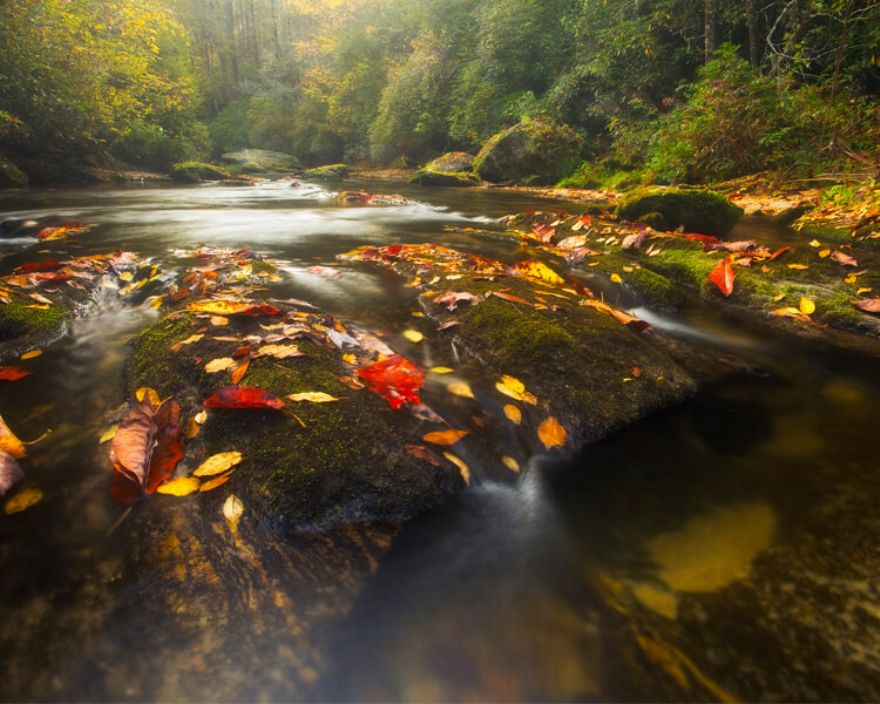Everyone lives in a flood zone (with differing risk levels)-
wherever rain falls, a flood can occur.
North Carolina offers beautiful landscapes, a moderate climate, a past rich in history, more than 300 miles of Atlantic coastline, and the highest mountain peaks east of the Rockies. However, with an average of 54 inches of rainfall by the coast and 16 inches of snowfall in the mountains, North Carolina is subject to some of the most extreme flooding conditions in the nation.
The top causes for flooding in North Carolina are severe storms, hurricanes, and tropical storms. This type of weather usually results in heavy rainfall and high coastal waters. In addition, North Carolina has 17 major river basins, which typically rise and sometimes crest after heavy rain or snow melts too quickly from the mountains.
However, the cost of flood insurance in North Carolina isn’t based on past history. It is based on a number of factors including present weather patterns, natural changes in the environment, and recent growth within North Carolina’s communities.
Main Causes of Flooding in North Carolina
Hurricanes & Coastal Storms
North Carolina’s coast is one of the nation’s regions most prone to being hit by a direct hurricane because its extended coastline. The Atlantic Hurricane Season lasts about six months (June 1 – November 30) and, if one strikes, can cause heavy winds, strong thunderstorms, flooding, and storm surges. All areas of North Carolina – from coastal and surrounding counties to the mountains – have been impacted by hurricanes within the past 20 years.
Hurricane research has shown between 1883 and 1996, a tropical cyclone makes landfall along the coastline about once every four years. An estimated 17.5% percent of all North Atlantic tropical cyclones have affected North Carolina. From 1980 to 2017, the deadliest hurricane was Hurricane Floyd (also known as ‘The Flood of the Century’ and ‘The 500-Year Flood’) in 1999, which caused 35 fatalities and record–breaking flooding.
- A 10-foot storm surge hit North Carolina’s coastline on September 16, 1999.
- Rivers rose over 20 feet above flood stage leaving entire towns underwater.
- Nearly every river basin in eastern North Carolina reached 500-year or greater flood levels.
- The Tar River suffered the worst flooding, exceeding 500-year flood levels along its lower stretches; it crested 24 ft (7.3 m) above flood stage.
Other Hurricanes:
- Hurricane Hugo: (September 1989)
- Hurricane Donna, one of the strongest hurricanes to hit the U.S.: (September 1960)
- Hurricane Hazel: (October 1954)
- Hurricane Fran (storm surge of 8-12ft): (September 1996)
Heavy Rainfall
The flood of 1916 broke every record in the book and was one of the largest floods on record to hit North Carolina. The destruction due to the excess rainfall defined flooding for an entire generation, while streams and rivers, already full from previous rains, surged across low ground with startling speed in mid-July of 1916.
Every single county in North Carolina has had at least two major flood disasters since 1950 – either from rising rivers or hurricane surge. In the Spring of 2017, North Carolina had a low-pressure system (not even a tropical storm) that will go down as a historical, high-volume rainfall in the Southeastern part of the state. Rainfall amounted up to 10 inches over a 3-day period with the heaviest near Raleigh, Winston-Salem, and Wilmington – all of which experience severe flooding. Flooding of this nature shut down roads and inundated homes and businesses.
North Carolina Record Rainfall Totals:
- August 25, 1908 –7.53 inches (over 2 days)
- September 5, 1999 – 6.59 inches (over 2 days)
- September 6, 1999 – 6.71 inches (over 2 days)

River Overflow
North Carolina has 17 major river basins. Of the 17 basins, 11 originate within the state of North Carolina, but only four are contained entirely within the state’s border – Cape Fear, Neuse, White Oak and the Tar-Pamlico basin. Rivers overflow when there is more water upstream (typically due to heavy rain or snow melt) than usual, and as it flows downstream to the adjacent low-lying areas (also called a floodplain), there is a surge and the water has no where to go and therefore, overflows into the surrounding land. In 2016, The US Geological Survey reported that at least 14 river gauges in North Carolina have broken stream flow records, most of which had been set during Hurricane Floyd flooding.
North Carolina Record River Overflow:
- Great Catawba River (August 1916) – waters peaked at 53.9 feet overnight
- Yadkin River (April 2017) – approached moderate flood stage after rising from nearly 5 feet to 20 feet
- Neuse River (October 2016) – waters peaked at 29.74 feet

Get a Flood Quote Online Now.

